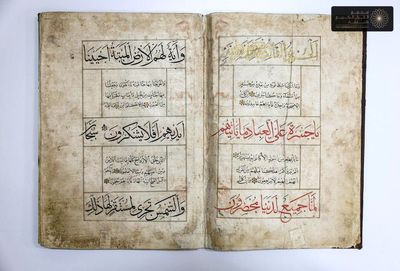The new additions date from the 8th through the 13th centuries C.E. and come from locations including the Umayyad, Mamluk, Timurid, Safavid, and Ottoman states, with the finds originating from the present-day Middle East and North Africa as well as India and China.
Sheikh Sherzad Abdul Rahman Taher, secretary general of the Holy Quran Academy, said in a statement that some of pieces represent the best work of their time, noting, “The calligraphy on the copies indicates that some of them were written by the most famous calligraphers” known to use ornaments and decoration sourced from gold and precious stones such as lapis lazuli. Favored for its deep blue hue, the inclusion of lapis lazuli would have signified the manuscripts’ importance while adding striking color
The new collection included 17 rare artifacts, some of which are multiple Quranic chips and others are complete Qurans, dating back to the period between the second and thirteenth centuries AH, Taher said.
The Academy contains within it seven different museums, including the Seven Readings Museum, the Hall of Scientific Quranic Miracles, the Museum of the Pillars of the Qur’an, and others. It also offers resources and classes for future and present Islamic scholars.




